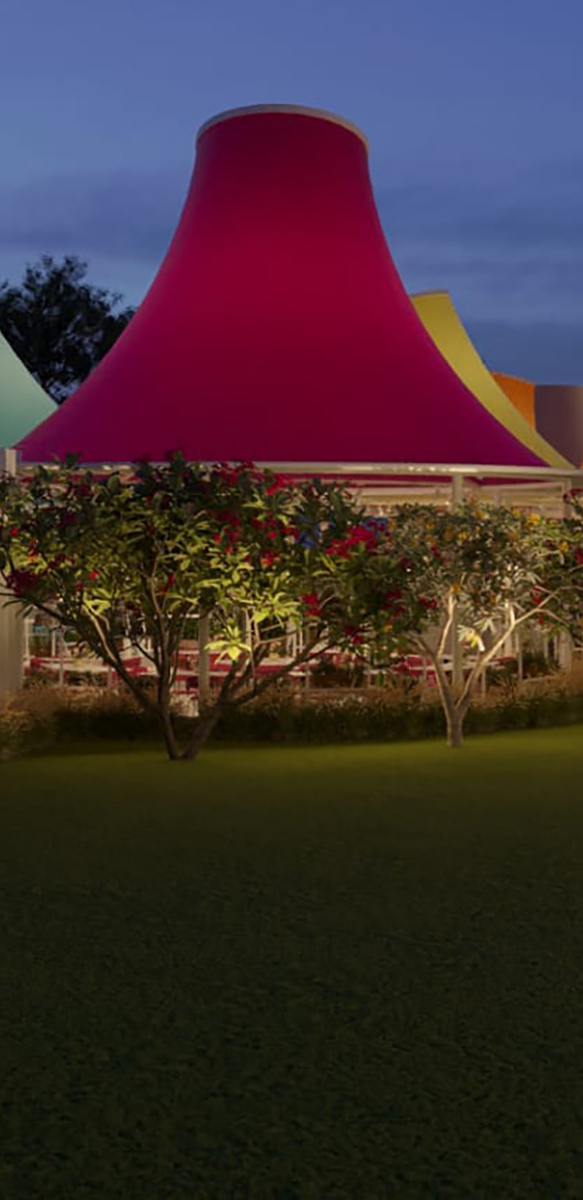
LANDSCAPE TENSILE STRUCTURES
A landscape tensile structure refers to a tensile structure used in outdoor spaces, such as parks, gardens, or recreational areas, to create shaded or covered areas. These structures provide functional and aesthetic benefits, enhancing the landscape and providing a comfortable environment for various activities. Here's some information on landscape tensile structures:
- Design and Materials: Landscape tensile structures are typically designed as lightweight, flexible canopies or shelters. They consist of a tensioned fabric membrane supported by a framework of columns, beams, or cables. The fabric used is usually a durable, weather-resistant material such as PVC-coated polyester or PTFE (polytetrafluoroethylene) fiberglass.
Types of Landscape Tensile Structures:
- Shae Sails: These are triangular or rectangular fabric panels tensioned between multiple anchor points. They provide shading over a designated area and can be arranged in various configurationds to suit the landscape.
- Canopies and Umbrellas: These are larger structures with single or multiple fabric panels supported by a framework. They offer broader coverage and can be designed in unique shapes and sizes.
- Walkway Covers: Tensile structures can also be used to create covered walkways or corridors in outdoor spaces, providing protection from the sun or rain while maintaining an open and airy feel.
Benefits of Landscape Tensile Structures:
- Shade and Sun Protection: Tensile structures provide shade and protection from the sun's harmful UV rays, making outdoor areas more comfortable and safer for people to enjoy.
- Aesthetic Appeal: Tensile structures add a visually striking element to the landscape, enhancing the overall design and creating a focal point or landmark.
- Versatility: Landscape tensile structures can be custom designed to fit various shapes, sizes, and configurations, allowing flexibility in creating unique outdoor spaces.
- Weather Resistance: The fabric used in tensile structures is designed to withstand outdoor elements, including rain, wind, and UV exposure, ensuring long-term durability.
- Quick Installation: Compared to traditional construction methods, landscape tensile structures can be installed relatively quickly, minimizing disruption to the outdoor space.
- Maintenance: Regular maintenance of landscape tensile structures involves inspecting the fabric and framework for any signs of wear, cleaning the fabric as needed, and ensuring proper tensioning and stability of the structure. Follow manufacturer guidelines or consult with professionals for specific maintenance requirements.
- Professional Assistance: Designing and installing landscape tensile structures often requires specialized expertise in structural engineering, fabric technology, and landscape design. It's advisable to consult with professionals or specialized companies experienced in tensile structure design and installation to ensure a successful project that meets safety standards and aesthetic goals.
Remember to comply with local regulations and permits when considering a landscape tensile structure. Consulting with professionals will help ensure compliance, safety, and a visually appealing addition to your outdoor space.